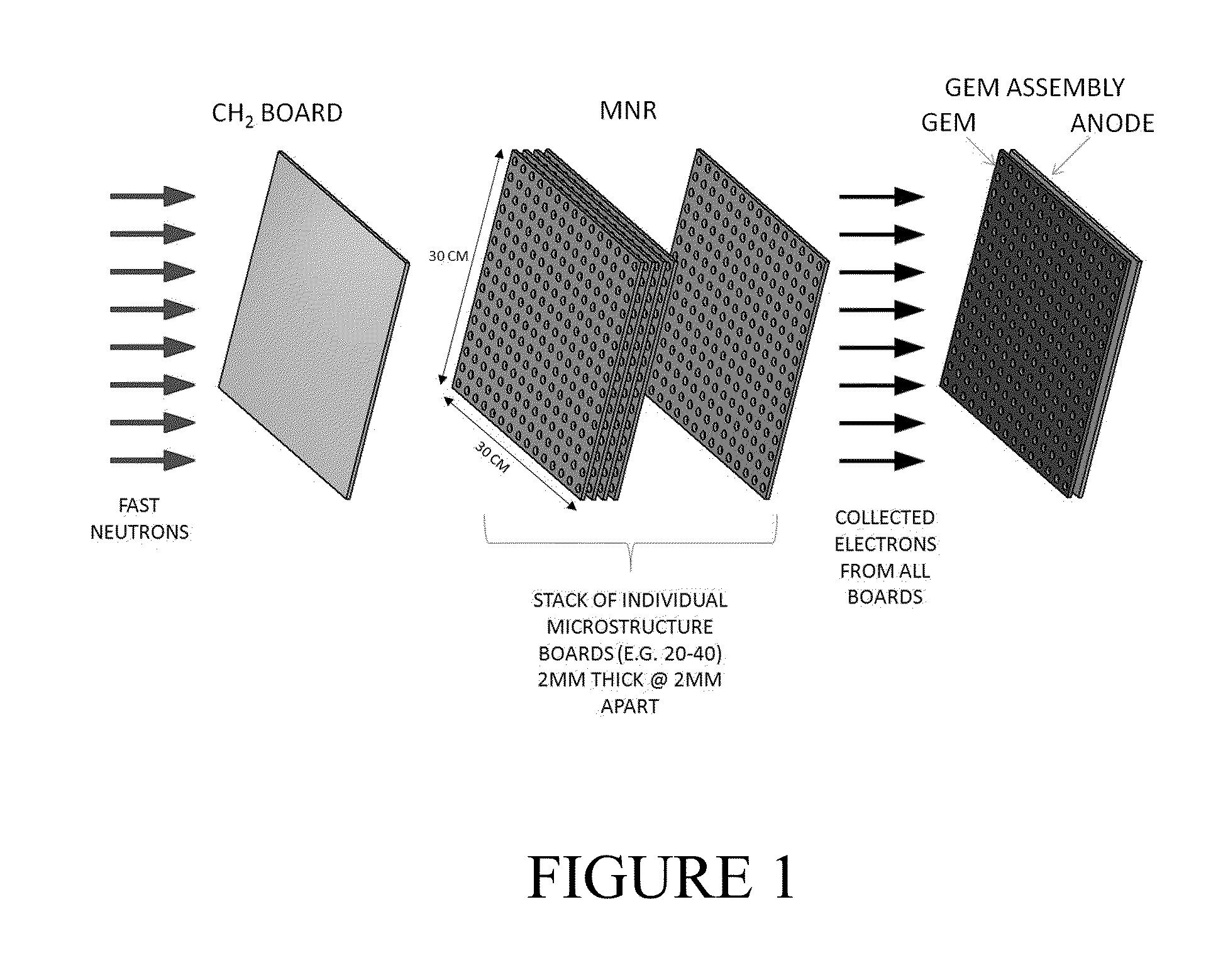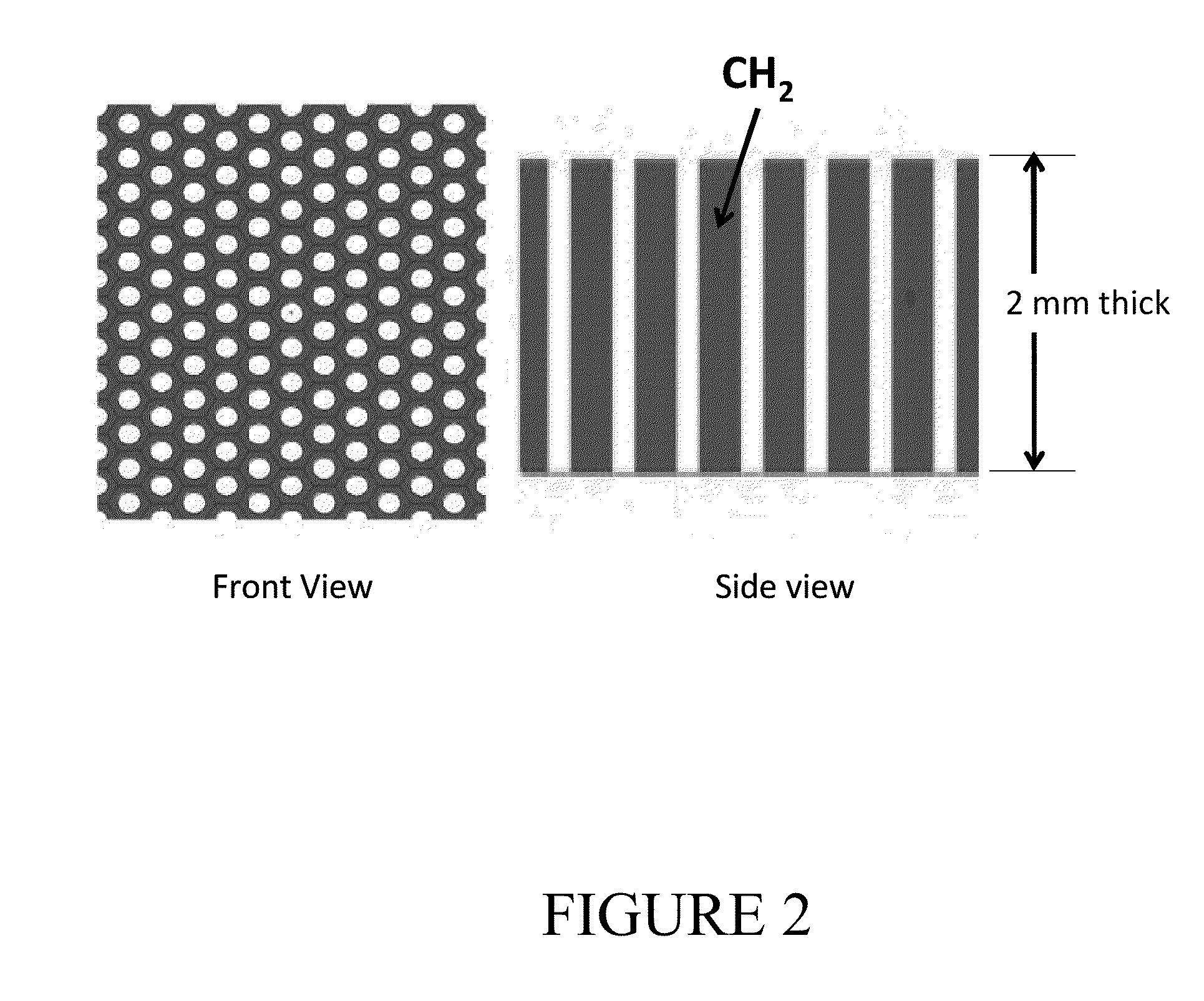Fast neutron detector having an open-structured hydrogenous radiator
a fast neutron and hydrogenous radiator technology, applied in the field of high-speed neutron detectors, can solve the problems of limited use of most neutron detection applications, limited detection efficiency of this approach, and inefficient detection of fast neutrons, especially over a large area (e.g. >10 cm10 cm), and achieves low electron affinity, promotes recoiling protons, and high surface area to volume ratio
- Summary
- Abstract
- Description
- Claims
- Application Information
AI Technical Summary
Benefits of technology
Problems solved by technology
Method used
Image
Examples
Embodiment Construction
[0025]FIG. 1 shows a conceptual drawing of one embodiment of the MNR. It consists of a stack of microstructured boards (made of a hydrocarbon polymer, CH2, such as high-density polyethylene), either separated by a small gap or on contact with each other, and placed within a gas. A small voltage is applied across each board to collect the electrons produced by the recoil protons which interact with the gas in the holes and the space (if it exists) between the boards. The figure shows a CH2 board in front of the MNR as an added source of recoiling protons to increase neutron detection efficiency. A Gas Electron Multiplier (GEM) assembly is shown following the MNR and serves as a method to amplify and detect the electrons. Other means of amplification can be used. The size, thickness and number of microstructure boards can be varied to attain a particular detection performance of the MNR to meet a particular neutron detection requirement.
[0026]To illustrate the properties of the MNR, w...
PUM
 Login to View More
Login to View More Abstract
Description
Claims
Application Information
 Login to View More
Login to View More - R&D
- Intellectual Property
- Life Sciences
- Materials
- Tech Scout
- Unparalleled Data Quality
- Higher Quality Content
- 60% Fewer Hallucinations
Browse by: Latest US Patents, China's latest patents, Technical Efficacy Thesaurus, Application Domain, Technology Topic, Popular Technical Reports.
© 2025 PatSnap. All rights reserved.Legal|Privacy policy|Modern Slavery Act Transparency Statement|Sitemap|About US| Contact US: help@patsnap.com



